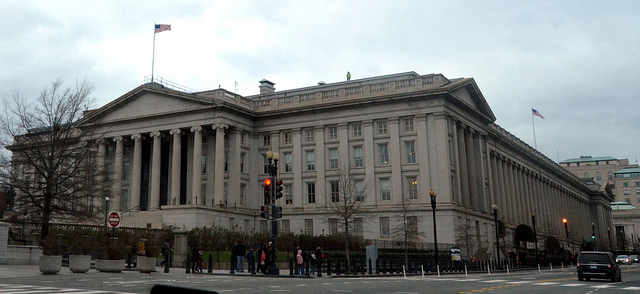
Adding a Broader High-Tax Exception to GILTI as Currently Exists Under Subpart F Would Address Double Taxation and Promote American Competitiveness
The Tax Cuts and Jobs Act dramatically improved the U.S. tax code and the ability of American companies to compete globally. Specifically, TCJA reduced the tax rate on businesses to 21 percent – a rate in line with other developed countries – and modernized the international system of taxation.
However, the complexity of the legislation has resulted in an unintended consequence: the law inadvertently subjected high-tax foreign income that was previously exempt from U.S. taxation to the new GILTI regime.
This is problematic and should be fixed by Treasury through the agency’s rulemaking authority. Ideally, Treasury should expand the high-tax exception that exists under Subpart F to GILTI income.
GILTI was passed as part of the TCJA as a way to ensure that income was not improperly assigned to low tax jurisdictions. GILTI is calculated by applying U.S. tax to a U.S. entity’s Controlled Foreign Corporation (CFC) exceeding 10 percent of the deemed rate of return of that CFCs tangible assets.
Although it is intended to impose taxation on low-tax IP-derived income of foreign subsidiaries, it is not necessarily limited to passive income.
In some cases, the provision applies to active, already-taxed business income due to interactions with other international tax provisions including expense allocation rules and the Base Erosion Anti-Abuse Tax (BEAT).
There is no evidence that Congress intended for this outcome. At the time the TCJA was passed, the conference report to accompany the TCJA clearly stated the intent to exclude high-tax income from GILTI:
“The Committee believes that certain items of income earned by CFCs should be excluded from the GILTI, either because they should be exempt from U.S. tax – as they are generally not the type of income that is the source of base erosion concerns – or are already taxed currently by the United States. Items of income excluded from GILTI because they are exempt from U.S. tax under the bill include foreign oil and gas extraction income (which is generally immobile) and income subject to high levels of foreign tax.”
The rationale of the committee, and the reason that high-tax income (defined as income that had been taxed by a foreign jurisdiction a minimum of 90 percent of the U.S. rate) has historically been exempt from U.S. taxation under Subpart F rules is clear. There is no opportunity for erosion of the U.S. tax base in cases where foreign earned income of a U.S. entity is being properly taxed in another jurisdiction.
Expanding the Subpart F exemption is an eloquent solution to unintended double taxation because the provision is already vetted.
In addition, it would not create a windfall for taxpayers as the existing Subpart F provision is elective and only applies to the extent “the taxpayer establishes to the satisfaction of the Secretary” that the income has already faced high tax rates.
Failing to add an expanded high-tax exception will harm American competitiveness given U.S. businesses face additional tax on high-tax CFC income, while foreign competitors face no additional tax on their high-tax income.
While the TCJA has substantially improved the U.S. tax code, it is crucial that Treasury ensures the pro-growth elements of the law are preserved. Preventing the double taxation of high-tax foreign income under the GILTI regime should be a priority and can be achieved through an expanded Subpart F high-tax exception.

